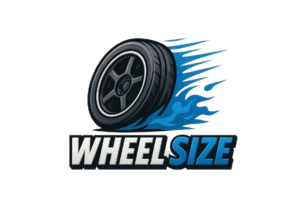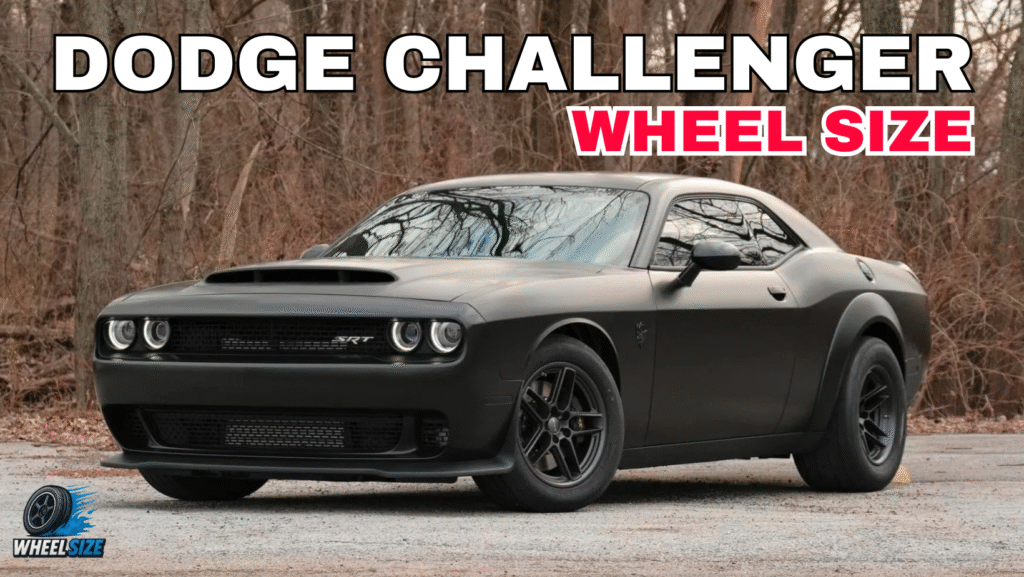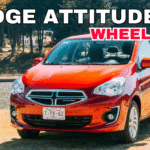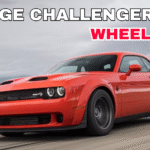The Dodge Challenger has been a performance icon for three very distinct generations. The E-body from the 1970s had raw muscle, the JT from the late 1970s and early 1980s was small and developed by Mitsubishi, and the LC platform brought back its muscle history. The design and power of cars have changed a lot throughout time, but one thing that hasn’t changed is that the wheels must fit properly. The appropriate size, offset, and tire matching for your wheels can make them easier to handle, keep you safe, and look better. This article gives you all the information you need on the wheels and tires for all three generations of the Challenger, including factory sizes, suggestions for upgrades, and tips on how to make them fit. If you’re restoring a classic, updating a second-gen daily driver, or personalizing a current Hellcat, having the right fitment data makes sure your wheels fit perfectly, don’t rub, and match the car’s performance potential. Let’s look at the specs for each generation and see what the best aftermarket choices are.
Dodge Challenger I (E-body) [1970–1974] Wheel Fitment
OEM Wheel & Tire Specifications
The first-generation Dodge Challenger came out in 1970 on Chrysler’s E-body architecture. It had parts in common with the Plymouth Barracuda but a wider wheelbase. This was the height of muscle cars, and the wheels showed how focused they were on performance. There was a wide range of wheels, from narrow 5-inch steel wheels on base models to wide 8-inch Rallye wheels on high-performance variants. It had a standard 5×114.3 bolt pattern, a 71.6 mm center bore, and 1/2″ – 20 UNF threads. The original tire sizes went from bias-ply 7.35–14s to F60–15s on performance trims. Offsets were usually mild or even a little negative, which made the stance broad. These original configurations were a good mix of style and performance for the time. However, current improvements can make the Challenger handle even better without losing its muscle car roots.
Dodge Challenger I (E-body) [1970–1974] – Wheel & Tire Specs (198 CID, 125 hp)
| Year | Center Bore | Bolt Pattern | Thread Size | OEM Tire Sizes | Rim Sizes | Offset (ET) | Aftermarket Wheel Size Range |
| 1970 | 71.6 mm | 5×114.3 | 1/2″ – 20 UNF | 7.35-14, E78-14, F78-14, F70-14, 195/75R14, 215/70R14, F60-15, E60-15 | 5Jx14, 5.5Jx14, 6Jx14, 7Jx15, 8Jx15 | ET -2 to ET19 | 14″–17″ |
| 1971 | 71.6 mm | 5×114.3 | 1/2″ – 20 UNF | 7.35-14, E78-14, F78-14, F70-14, 195/75R14, 215/70R14, F60-15, E60-15 | 5Jx14, 5.5Jx14, 6Jx14, 7Jx15, 8Jx15 | ET -2 to ET19 | 14″–17″ |
| 1972 | 71.6 mm | 5×114.3 | 1/2″ – 20 UNF | 7.35-14, E78-14, F78-14, F70-14, 195/75R14, 215/70R14, F60-15, E60-15 | 5Jx14, 5.5Jx14, 6Jx14, 7Jx15, 8Jx15 | ET -2 to ET19 | 14″–17″ |
| 1973 | 71.6 mm | 5×114.3 | 1/2″ – 20 UNF | 215/70R14, 215/65R15, 235/60R15, 255/60R15 | 5Jx14, 5.5Jx14, 6Jx14, 7Jx15, 8Jx15 | ET 0 to ET12 | 14″–17″ |
| 1974 | 71.6 mm | 5×114.3 | 1/2″ – 20 UNF | 215/70R14, 215/65R15, 235/60R15, 255/60R15 | 5Jx14, 5.5Jx14, 6Jx14, 7Jx15, 8Jx15 | ET 0 to ET12 | 14″–17″ |
Recommended Aftermarket Upgrades
Going up to 17-inch wheels is a common and elegant upgrade for a first-gen Challenger. A combination of7x8 front and 17×9.5 rear wheels provides the car an aggressive look and lets you use disc brakes. Modern performance tires, such as the 235/45R17 in the front and the 275/40R17 in the back, provide a lot more grip than the tires that were made back then. Keeping the offset close to stock (ET 0–15) helps keep the fenders from getting in the way. Aluminum wheels that are light reduce unsprung mass, which makes steering more responsive without changing the classic design.
Tips for Proper Fitment
Always check the brake clearance when you put new wheels on an E-body Challenger, especially if you use aftermarket calipers. The fender lips on these cars can be tight, so make sure the tires fit before putting them on. Hub-centric rings might assist in keeping your car from vibrating. If you have wider rears, make sure the suspension parts are in good shape so they don’t rub while they’re loaded.
Dodge Challenger II (JT) [1978–1983] Wheel Fitment
OEM Wheel & Tire Specifications
The second-generation Challenger was a big change from V8 muscle cars to small, fuel-efficient coupes. The JT-platform Challenger was made by Mitsubishi and sold under the Dodge name. It had a smaller 4×114.3 bolt pattern and narrower wheels. The stock arrangement had 14-inch steel wheels with 195/70R14 tires. Later variants came with 15- or even 16-inch wheels. Offsets were substantially higher (ET35–44) than the E-body, which put stability ahead of an aggressive stance. Even if it doesn’t have a lot of power, getting the right wheels is still important for keeping the handling balanced and not putting too much stress on the suspension.
odge Challenger II (JT) [1978–1983] – Wheel & Tire Specs (1.6L I4, 99 hp)
| Year | Center Bore | Bolt Pattern | Thread Size | OEM Tire Sizes | Rim Sizes | Offset (ET) | Aftermarket Wheel Size Range |
| 1978 | 67.1 mm | 4×114.3 | M12 x 1.5 | 195/70R14 | 5.5Jx14 ET44 | 35 – 44 | 14″–16″ |
| 1979 | 67.1 mm | 4×114.3 | M12 x 1.5 | 195/70R14 | 5.5Jx14 ET44 | 35 – 44 | 14″–16″ |
| 1980 | 67.1 mm | 4×114.3 | M12 x 1.5 | 195/70R14, 195/65R15 | 5.5Jx14 ET44, 6Jx15 ET38 | 35 – 44 | 14″–16″ |
| 1981 | 67.1 mm | 4×114.3 | M12 x 1.5 | 195/70R14, 195/65R15, 205/55R16 | 5.5Jx14 ET44, 6Jx15 ET38, 6.5Jx16 ET35 | 35 – 44 | 14″–16″ |
| 1982 | 67.1 mm | 4×114.3 | M12 x 1.5 | 195/70R14, 195/65R15, 205/55R16 | 5.5Jx14 ET44, 6Jx15 ET38, 6.5Jx16 ET35 | 35 – 44 | 14″–16″ |
| 1983 | 67.1 mm | 4×114.3 | M12 x 1.5 | 195/70R14, 195/65R15, 205/55R16 | 5.5Jx14 ET44, 6Jx15 ET38, 6.5Jx16 ET35 | 35 – 44 | 14″–16″ |
Recommended Aftermarket Upgrades
Upgrades should be minor because the JT’s wheel wells are smaller. A 15×6.5 or 16×7 wheel with a +35 offset fits perfectly without any changes. Tires like 205/50R16 give you better turn-in while keeping the ride comfortable. Acceleration and braking are better with lighter wheels.
Fitment Challenges & Solutions
The hardest part of driving a JT Challenger is avoiding getting in the way of the suspension struts. Before you buy wheels, make sure to check the backspacing. A little spacer can help if you want to accommodate wider tires, but be careful to keep the hub engaged safely.
Dodge Challenger III (LC) [2008–2026] Wheel Fitment
OEM Wheel & Tire Specifications
The new LC-platform Challenger has the same aggressive proportions as the original, but it also has the latest performance technology. The LC has a 5×115 bolt pattern and a 71.6 mm center bore. It comes with a lot of different stock wheel sizes, from 17-inch base versions to 20-inch performance packages. The supercharged Hellcat and Demon models went all out with ultra-wide rear tires for the best traction. Factory offsets run from 20 to 26 mm, which strikes a compromise between an aggressive stance and enough clearance to work. A correct fit keeps everything stable at high speeds and stops them from rubbing when you turn hard.
Dodge Challenger III (LC) [2008–2026] – Wheel & Tire Specs (3.5 SOHC V6)
A staggered muscle stance on the LC is common with 20×9 front and 20×10.5 rear wheels and 275/40R20 and 315/35R20 tires. When used on the track, lighter 18-inch wheels make it easier to speed up and slow down. Deep concave shapes make things look more interesting while keeping the standard offsets
Dodge Challenger III (LC) [2008–2026] – Wheel & Tire Specs (3.5 SOHC V6)
| Year | Center Bore | Bolt Pattern | Thread Size | Torque (Nm) | OEM Tire Sizes | OEM Rim Sizes | Offset Range (mm) | Tire Pressure (bar) | Aftermarket Wheel Size Range |
| 2008 | 71.6 mm | 5×115 | M14 x 1.5 | 176 | 215/65R17, 235/55R18, 235/50R19, 245/45ZR20 | 7Jx17 ET22, 7.5Jx18/19 ET24, 8Jx20 ET24 | 20 – 26 | 2.4 (front/rear) | 17″–22″ |
| 2009 | 71.6 mm | 5×115 | M14 x 1.5 | 176 | 215/65R17, 235/55R18, 235/50R19, 245/45ZR20 | 7Jx17 ET22, 7.5Jx18/19 ET24, 8Jx20 ET24 | 20 – 26 | 2.4 (front/rear) | 17″–22″ |
| 2010 | 71.6 mm | 5×115 | M14 x 1.5 | 176 | 215/65R17, 235/55R18, 235/50R19, 245/45ZR20 | 7Jx17 ET22, 7.5Jx18/19 ET24, 8Jx20 ET24 | 20 – 26 | 2.4 (front/rear) | 17″–22″ |
| 2011 | 71.6 mm | 5×115 | M14 x 1.5 | 176 | 215/65R17, 235/55R18, 235/50R19, 245/45ZR20 | 7Jx17 ET22, 7.5Jx18/19 ET24, 8Jx20 ET24 | 20 – 26 | 2.4 (front/rear) | 17″–22″ |
| 2012 | 71.6 mm | 5×115 | M14 x 1.5 | 176 | 215/65R17, 235/55R18, 235/50R19, 245/45ZR20 | 7Jx17 ET22, 7.5Jx18/19 ET24, 8Jx20 ET24 | 20 – 26 | 2.4 (front/rear) | 17″–22″ |
| 2013 | 71.6 mm | 5×115 | M14 x 1.5 | 176 | 215/65R17, 235/55R18, 235/50R19, 245/45ZR20 | 7Jx17 ET22, 7.5Jx18/19 ET24, 8Jx20 ET24 | 20 – 26 | 2.4 (front/rear) | 17″–22″ |
| 2014 | 71.6 mm | 5×115 | M14 x 1.5 | 176 | 215/65R17, 235/55R18, 235/50R19, 245/45ZR20 | 7Jx17 ET22, 7.5Jx18/19 ET24, 8Jx20 ET24 | 20 – 26 | 2.4 (front/rear) | 17″–22″ |
| 2015 | 71.6 mm | 5×115 | M14 x 1.5 | 176 | 215/65R17, 235/55R18, 235/50R19, 245/45ZR20 | 7Jx17 ET22, 7.5Jx18/19 ET24, 8Jx20 ET24 | 20 – 26 | 2.4 (front/rear) | 17″–22″ |
| 2016 | 71.6 mm | 5×115 | M14 x 1.5 | 176 | 215/65R17, 235/55R18, 235/50R19, 245/45ZR20 | 7Jx17 ET22, 7.5Jx18/19 ET24, 8Jx20 ET24 | 20 – 26 | 2.4 (front/rear) | 17″–22″ |
| 2017 | 71.6 mm | 5×115 | M14 x 1.5 | 176 | 215/65R17, 235/55R18, 235/50R19, 245/45ZR20 | 7Jx17 ET22, 7.5Jx18/19 ET24, 8Jx20 ET24 | 20 – 26 | 2.4 (front/rear) | 17″–22″ |
| 2018 | 71.6 mm | 5×115 | M14 x 1.5 | 176 | 215/65R17, 235/55R18, 235/50R19, 245/45ZR20 | 7Jx17 ET22, 7.5Jx18/19 ET24, 8Jx20 ET24 | 20 – 26 | 2.4 (front/rear) | 17″–22″ |
| 2019 | 71.6 mm | 5×115 | M14 x 1.5 | 176 | 215/65R17, 235/55R18, 235/50R19, 245/45ZR20 | 7Jx17 ET22, 7.5Jx18/19 ET24, 8Jx20 ET24 | 20 – 26 | 2.4 (front/rear) | 17″–22″ |
| 2020 | 71.6 mm | 5×115 | M14 x 1.5 | 176 | 215/65R17, 235/55R18, 235/50R19, 245/45ZR20 | 7Jx17 ET22, 7.5Jx18/19 ET24, 8Jx20 ET24 | 20 – 26 | 2.4 (front/rear) | 17″–22″ |
| 2021 | 71.6 mm | 5×115 | M14 x 1.5 | 176 | 215/65R17, 235/55R18, 235/50R19, 245/45ZR20 | 7Jx17 ET22, 7.5Jx18/19 ET24, 8Jx20 ET24 | 20 – 26 | 2.4 (front/rear) | 17″–22″ |
| 2022 | 71.6 mm | 5×115 | M14 x 1.5 | 176 | 215/65R17, 235/55R18, 235/50R19, 245/45ZR20 | 7Jx17 ET22, 7.5Jx18/19 ET24, 8Jx20 ET24 | 20 – 26 | 2.4 (front/rear) | 17″–22″ |
| 2023 | 71.6 mm | 5×115 | M14 x 1.5 | 176 | 215/65R17, 235/55R18, 235/50R19, 245/45ZR20 | 7Jx17 ET22, 7.5Jx18/19 ET24, 8Jx20 ET24 | 20 – 26 | 2.4 (front/rear) | 17″–22″ |
| 2024 | 71.6 mm | 5×115 | M14 x 1.5 | 176 | 215/65R17, 235/55R18, 235/50R19, 245/45ZR20 | 7Jx17 ET22, 7.5Jx18/19 ET24, 8Jx20 ET24 | 20 – 26 | 2.4 (front/rear) | 17″–22″ |
| 2025 | 71.6 mm | 5×115 | M14 x 1.5 | 176 | 215/65R17, 235/55R18, 235/50R19, 245/45ZR20 | 7Jx17 ET22, 7.5Jx18/19 ET24, 8Jx20 ET24 | 20 – 26 | 2.4 (front/rear) | 17″–22″ |
| 2026 | 71.6 mm | 5×115 | M14 x 1.5 | 176 | 215/65R17, 235/55R18, 235/50R19, 245/45ZR20 | 7Jx17 ET22, 7.5Jx18/19 ET24, 8Jx20 ET24 | 20 – 26 | 2.4 (front/rear) | 17″–22″ |
.
Performance & Aesthetic Considerations
Going over 22 inches can make the ride less comfortable and less effective. Wider tires give you greater grip, but they can also make the road louder. Always think about how the Challenger looks and how it handles. Also, keep in mind that unsprung weight impacts how fast it can go and how well it can stop.
Wheel Fitment Comparison: All Dodge Challenger Generations
It’s simple to see how design objectives changed throughout the years when you look at how the wheels fit on all three iterations of the Dodge Challenger. The E-body (1970–1974) was all about muscle. It had wide wheels, low offsets, and a posture that filled the fenders. The JT (1978–1983) went the other way, with smaller, narrower wheels, high offsets, and a compact bolt pattern that was made for economics instead of performance. The LC (2008–2026) combines the best of both worlds by adopting a modern 5×115 pattern, bigger wheels, and aggressive offsets that let you put on huge tires while still being comfortable and easy to handle.
This comparison helps fans figure out which models can easily fit wider aftermarket wheels and which ones need more careful preparation to install them. For instance, you need adapters to put modern wheels on a JT since the bolt patterns are different. However, you can put modern aluminum wheels on an E-body as long as the offset and hub bore are correct. This knowledge makes sure that changes improve both style and drivability without causing problems with clearance or safety.
Common Mistakes in Challenger Wheel Fitment
A lot of people who own Challengers make the mistake of only thinking about how the wheels look when they buy them. One of the most common mistakes is choosing wheels with the wrong offset, which can cause them to rub against the fenders or suspension parts. Another mistake that people often make is not checking the brake clearance, which is especially crucial for performance versions with bigger calipers. The speedometer reading and handling can also be inaccurate if the tires are the wrong size.
Some owners don’t pay attention to the load rating of their wheels, which needs to be high enough to properly hold the weight of the car, especially for heavy versions like the LC. Cheap, low-quality aftermarket wheels could not be safe and could bend or break when you put stress on them. Lastly, putting tires with different diameters on the front and back of all-wheel-drive versions can hurt the drivetrain. Knowing OEM specs and staying within safe upgrade ranges is the first step to not making these blunders.
Expert Tips for Perfect Wheel Fitment
Getting the right wheel fitting on a Dodge Challenger isn’t simply a matter of matching numbers on a chart; it’s also about making sure the wheels look good. Always try on new wheels before you buy them, especially if you’re going to the edge of what will fit. When you need to, use hub-centric rings to make sure everything is lined up correctly and to get rid of vibrations. Keep in mind the weight of the wheels; lighter wheels can make a big difference in how quickly you can speed up and slow down.
If you want to lower your Challenger, keep in mind that the suspension will compress more, so choose tire sizes that won’t scrape over bumps. Staggered fitment can improve traction and create a muscular look for wide setups, but you need to make sure that the tire widths are still within the range that ABS and traction control systems can handle. Lastly, keep in mind that bigger calipers may need different spoke designs to fit when you upgrade your brakes. This proactive strategy saves you time and money while still getting you the look and performance you want.
Conclusion
The Dodge Challenger has been in existence for a long time, and throughout that time, three quite different platforms have been made, each with its own unique wheel fitting features. The E-body is a wide, low-offset muscular vehicle, the JT is a small, efficient car, and the LC is a powerful, aggressive car. Knowing what your car can do is the first step in making it better. The perfect fit keeps the car from rubbing, improves handling, and makes it safer. The right wheel design also makes the Challenger look bolder. If you’re restoring an old classic or building a new performance car, the right wheels and tires are what make the car look good and work well. Use these specs as a guide, and your Challenger will give you the perfect mix of style, grip, and ride quality.
FAQs
What is the bolt pattern for Dodge Challenger wheels?
E-body: 5×114.3, JT: 4×114.3, LC: 5×115. Always match this to your wheels or use adapters if changing patterns.
Can I fit 22-inch wheels on my Challenger without rubbing?
Yes, on LC models with the correct offset and tire size, but ride comfort and performance may suffer.
Do older E-body Challengers support modern alloy wheels?
Yes, with proper offset and hub bore adjustments.
What’s the widest tire I can run on a stock Challenger?
On LC models, up to 315 mm in the rear with proper wheels; older generations have tighter limits.



